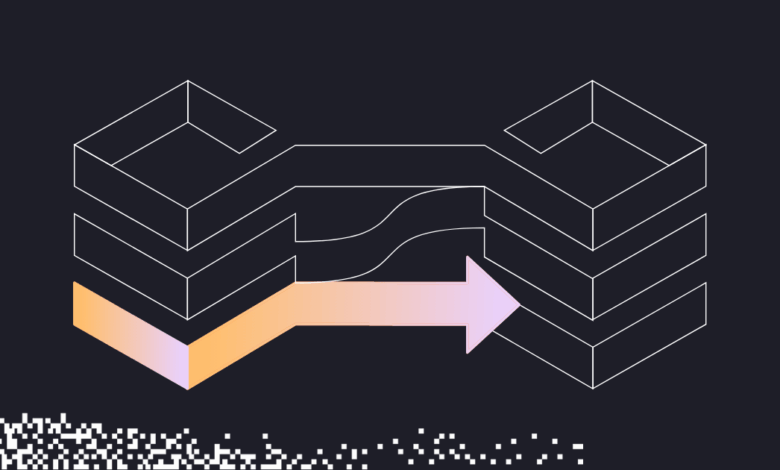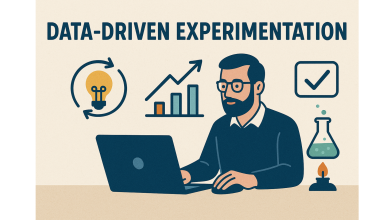
Data migration is hard. Data migration is costly – across time, dollars and most especially risk. Why? Data migration has traditionally been a resource-intensive ecosystem of voluminous data scattered across systems and data stores, multi-step processes suffering from a dearth of tools, and cross-functional expertise employed across longer-than-planned durations. The fundamental challenge—ensuring data maintains its utility and integrity when transitioning between systems—remains constant regardless of technological evolution. Historically, these data migration initiatives have demanded diverse teams with specialized business and technical knowledge working collectively to “get the data right”—effectively translating data utility from legacy systems to new environments while preserving business functionality.
The traditional data migration paradigm has always “tolerated” an inherent knowledge gap between stakeholders. Consider the scenario where an organization undergoes business transformation and decides to decommission a current application and replace it with a newer system.
Current state experts possess a deep understanding of existing data structures and use patterns but lack familiarity with the new target state systems. Conversely, the new vendor(s) and third-party implementation teams bring expertise in destination systems but operate with limited visibility into source data nuances.
This bifurcation of knowledge creates a critical vulnerability in data migration initiatives, as a comprehensive understanding of both environments is a prerequisite for success. At Zengines, we’ve witnessed firsthand how this knowledge gap leads to costly delays, budget overruns, and failed implementations across industries.
The Transformative Impact of Artificial Intelligence on Data Migration
Artificial intelligence (AI) represents a multidimensional spectrum of capabilities that has evolved significantly in recent years. While AI has been available and used for decades, today’s common diction frequently equates AI to generative capabilities e.g., “ChatGPT”, though Large Language Models (LLMs), represents just one facet of a comprehensive AI ecosystem.
Prior to the emergence of LLM, AI applications progressed from foundational clustering and analytics capabilities to robotic process automation and eventually to cognitive simulation functions.
The strategic value proposition for AI in data migration stems from its ability to enhance every phase of the migration lifecycle through different modalities of artificial intelligence. The Zengines platform leverages this full spectrum of AI capabilities—from pattern recognition and clustering algorithms to advanced LLMs—to create an integrated solution that addresses each phase of the data migration lifecycle.
Source Data Comprehension and Profiling in Data Migration
The initial critical step in any data migration—developing comprehensive understanding of source data characteristics—aligns perfectly with AI’s analytical capabilities. Advanced clustering algorithms, statistical modeling, and pattern recognition techniques provide rapid insight into data structures, relationships, and quality dimensions.
These insights establish the foundation for downstream efficiency gains by optimizing future work steps (e.g., testing) with the information exposed by AI. Zengines’ AI Analyzer automatically profiles source data within minutes, identifying data quality issues, completeness gaps, and anomalies that would traditionally take analysts days, weeks, or months to discover manually. This immediate visibility enables project managers to allocate resources effectively and anticipate potential challenges before they impact timelines.
Mapping Acceleration and Enhancement for Data Migration
Perhaps the most transformative application occurs during the mapping phase, where AI significantly accelerates what has traditionally been a labor-intensive process. The previously manual task of correlating source system tables, fields, enumerations, and encoded values to their target system equivalents now benefits from predictive analytics and pattern recognition capabilities.
Modern AI tools can evaluate structural similarities, semantic relationships, and historical mapping patterns to generate high-confidence mapping recommendations that dramatically reduce cycle time while improving accuracy. This represents a paradigm shift from the traditional approach of schema-by-schema manual analysis in data migration. The Zengines Mapper demonstrates this transformation in action—automatically generating mapping recommendations in seconds that achieve up to 85-95% accuracy, compared to traditional manual mapping approaches that can take months to complete. Our customers report 6x productivity improvements for business analysts using our AI-powered mapping capabilities.
Rules Generation and Transformation Logic for Data Migration
The development of transformation rules—the logical constructs that govern how data elements change during migration—has been revolutionized by LLM capabilities. These sophisticated language models can interpret business requirements, analyze data patterns, and generate appropriate transformation logic with minimal human intervention.
This capability extends beyond simple field-to-field mappings to encompass complex conditional transformations, data cleansing operations, and exception handling protocols. The result is more comprehensive transformation logic delivered in significantly compressed timeframes for data migration projects.
Zengines’ LLM-powered transformation engine allows business analysts to describe their requirements in plain English and automatically generates the corresponding transformation syntax. For example, a user can simply type “split the full name field into first and last name” and receive production-ready transformation code in seconds—eliminating the inefficient handoff between business analysts and technical developers.
Testing Optimization and Reconciliation in Data Migration
The validation phase of data migration presents another critical opportunity for AI application. The fundamental question—whether migrated data maintains functional equivalence in its new environment—requires sophisticated testing strategies.
AI provides multidimensional value in this context by optimizing test case selection to maximize coverage while minimizing redundancy. It automates the identification of inconsistencies between source and target environments.
AI facilitates rapid remediation through automated adjustment of transformation rules and creates continuous improvement feedback loops that enhance migration quality. This represents the application of both predictive intelligence and robotic process automation within a unified testing framework, eliminating manual reconciliation efforts while improving detection of subtle inconsistencies.
Strategic Considerations for AI-Enabled Data Migration
While the potential of AI across the data migration lifecycle is transformative, several strategic considerations warrant executive attention.
AI as a Strategic Partner in Data Migration
Data migrations inherently involve orchestrating the transformation of an organization’s most valuable asset—its data. Unlike transactional processes, migrations represent complex, multi-dimensional initiatives with interdependent workflows that cannot be reduced to simple automation tasks.
Within this context, AI must be positioned as a strategic partner that enhances the data migration ecosystem rather than as disconnected point solutions. Organizations that implement fragmented AI capabilities across the migration lifecycle often create technological friction that significantly undermines return on investment.
Each disconnected solution introduces additional licensing costs, integration complexities, and specialized skill requirements. The cumulative effect is a data migration ecosystem where technology investments compete with, rather than complement, one another—dramatically increasing total cost of ownership while diminishing operational efficiency.
This challenge led us to architect Zengines as a unified platform where all data migration requirements—analysis, mapping, transformation, and validation—operate within a single, AI-powered environment that intelligently communicates across migration steps. Rather than forcing organizations to stitch together multiple point solutions, our integrated approach ensures that insights flow seamlessly between migration phases while maintaining consistent user experiences and centralized project governance.
The optimal approach involves mapping specific AI modalities to data migration challenges within an integrated architecture where insights flow seamlessly between phases. This targeted deployment strategy maximizes ROI in multiple dimensions: reducing technology acquisition costs through consolidated platforms, decreasing implementation timeframes through standardized methodologies, and optimizing resource utilization through consistent user experiences.
This approach maintains appropriate human oversight of critical decisions, ensuring that efficiency gains do not come at the expense of data governance. Executive leadership must approach AI enablement with architectural discipline that prioritizes long-term value creation over point optimizations.
By establishing a unified framework where AI capabilities complement human expertise throughout the data migration lifecycle, organizations achieve substantial and sustainable ROI while effectively managing the inherent complexities of data transformation initiatives.
Universal Applicability: A Fundamental Data Migration Capability
While numerous AI applications target industry-specific challenges, data migration represents a fundamental capability required by organizations regardless of sector, size, or mission. Every enterprise—from Fortune 500 corporations to small businesses, from academic institutions to government agencies—faces the inevitable requirement to maintain data continuity and utility through system transitions.
This universal requirement creates a compelling value proposition for AI-enhanced data migration capabilities that transcend traditional boundaries. The ubiquity of the challenge means that advancements in this domain deliver benefits across the entire organizational landscape rather than serving narrow use cases.
When organizations implement AI-enabled data migration frameworks, they establish core competencies that support multiple strategic initiatives—from legacy system modernization to cloud transformation to merger integration.
Addressing the Black Box Challenge: Mainframe Data Lineage
One of the more complex challenges in data migration often involves legacy technologies like mainframes, midranges, and “black box” systems where institutional knowledge has been trapped or lost over decades. Traditional approaches to understanding COBOL modules, JCL/CL scripts, and decades-old business logic can take months or years of manual analysis.
Zengines Mainframe Data Lineage addresses this challenge directly by automatically parsing COBOL code, mapping data flows, and visualizing complex relationships within minutes rather than months. Our AI algorithms can trace data paths through thousands of interconnected modules, identify calculation logic, and expose conditional branching statements that would otherwise require expensive subject matter experts to decipher.
This capability has proven invaluable for organizations planning mainframe decommissioning projects or simply trying to understand how their current systems operate. By democratizing access to legacy system knowledge, we enable business analysts to participate directly in modernization initiatives rather than depending solely on increasingly scarce mainframe specialists.
The New Data Migration Paradigm
The integration of AI across the data migration lifecycle represents a fundamental shift in how organizations approach system transitions. By applying different AI modalities—from analytical engines to predictive models to generative systems—to specific migration challenges, organizations can achieve unprecedented efficiency, accuracy, and risk reduction.
This evolution transforms data migration from a necessary technical burden to a strategic enabler of digital transformation. Organizations that develop sophisticated, AI-enabled migration capabilities position themselves for both immediate operational benefits and long-term strategic advantage.
Rather than viewing data migration as a periodic project requirement, forward-thinking executives should recognize it as a continuous capability essential for maintaining data as a strategic asset. By embracing the AI-enabled data migration paradigm, organizations establish the foundation for sustained data value creation across the enterprise technology lifecycle.
Interested in learning more about Zengines platform? Schedule a demonstration to see how Zengines can transform your organization’s approach to data migrations.




